
Visit Brasov and surroundings e-bike tour
1 day
About this activity
Itinerary
This is a typical itinerary for this product
Stop At: Black Church (Biserica Neagra), Curte Honterus Johannes nr. 2, Brasov 500025 Romania
The originally-Roman Catholic structure was known as the Church of Saint Mary, replacing an older building used for the same purpose.[1] Construction on it began during the late 14th century, at an unknown date — analysis of related evidence has led several researchers to conclude that work began between 1383 and 1385,[2] employing Bulgarian workers and craftsmen who proceeded to establish the Brașov Bulgarian colony in Șcheii Brașovului.[3][4] According to popular legend, a German child was disturbing the Bulgarian builders or told them that one of the walls was leaning. An annoyed Bulgarian pushed the child off the church tower and then immured his corpse in the church to conceal his crime.[5]
It is known that, in its first stages, the building was serviced by a priest named Thomas (died 1410), whose grave is located in the choir area.[6] Work on the fortifications in the surrounding area probably began at the same time as work on the church, leading in time to the completion of Brașov's third citadel.[7]
Its altar originally featured a single column, but its role in supporting the entire central structure — on the model of German cathedrals built by Hans Stettheimer (a view expressed by researchers such as Ernst Kühlbrandt and Antal Hekler) is under dispute.[8] The naves took longer to complete, and construction was interrupted for various intervals: in 1423, Pope Martin V issued an indulgence for people involved in construction, as a means to reactivate the site; in 1474, a document issued by Sixtus IV acknowledged that work was still lagging.[9]
Several octagonal pillars, redesigned at least once during the building process, were probably completed around 1444.[10] One of them features the inlaid crest of military leader John Hunyadi, who is mentioned among the church benefactors.[11] The most intense work took place before and after 1450, and involved completing the exceptionally large number of portals, including the northern "Golden Gate" and its adjacent altar of the Holy Sacrifice.[12] The eastern portal, commissioned by the Hungarian King Matthias Corvinus, was completed in 1476.[13] The vestry was enlarged at some point between 1500 and 1515.[14]
Completed during the 15th century (soon after 1476), the church belongs to the final stages of Gothic architecture.[15] The result was a three-nave basilica, all the same height,[8] as was preferred during the 15th and 16th centuries in the German lands, where most of the architects and masons originated. Many parts of the building show similarities with the church in Sebeș and St. Michael Church of Cluj-Napoca,[16] as well as with the Dominikánsky kostol in Košice.[17] The design was itself an inspiration for other religious buildings in the region, and it is possible that a stonemason originally employed on the site later worked on the church in Ghimbav.[18]
The Catholic services were replaced with Lutheran ones during the Protestant Reformation, coinciding with the influence exercised by Johannes Honter. A statue in memory of Honter was later erected by Harro Magnussen on one side of the building. The structure was partially destroyed during a great fire set by invading Habsburg forces on the April 21, 1689 (during the Great Turkish War).[19] Afterwards, it became known as the Black Church. A large part of the inner structure was modified during the 18th century, breaking with the original design.[8]
Following the fire of 1689, Biserica Neagră was repaired with the help of masons coming from Danzig, as local craftsmen had not mastered the craft of completing the enormous vaults; these were to be completed in Baroque style.
Duration: 1 hour
Stop At: Postăvaru, Brașov, Romania
The Postăvarul massif (Transylvanian German Schuler and Schulerberg) is a massif in Romania, being part of the Romanian Carpathians, (which are part of the Carpathian mountains range). The altitude of the highest peak, also named Postavarul is 1799 metres.
Geographically the Postăvarul Massif stands at the southern end of the grand arc of the Eastern Carpathians. Together with the neighboring Piatra Mare Massif it forms the Barsei Mountains group, neighbouring the southern side of Tara Barsei (Burzenland) depression.
Poiana Brasov, one of the best known ski resorts in Romania, is located on the northern slopes of Postavarul mountain. The peak of the mountain can be easily reached from the resort by cable car.
Also we will stop at the oldest cabin on the mountain, Postavaru cabin, where we can stop for lunch, good food and great view.
Duration: 1 hour
Read more
Show less
This is a typical itinerary for this product
Stop At: Black Church (Biserica Neagra), Curte Honterus Johannes nr. 2, Brasov 500025 Romania
The originally-Roman Catholic structure was known as the Church of Saint Mary, replacing an older building used for the same purpose.[1] Construction on it began during the late 14th century, at an unknown date — analysis of related evidence has led several researchers to conclude that work began between 1383 and 1385,[2] employing Bulgarian workers and craftsmen who proceeded to establish the Brașov Bulgarian colony in Șcheii Brașovului.[3][4] According to popular legend, a German child was disturbing the Bulgarian builders or told them that one of the walls was leaning. An annoyed Bulgarian pushed the child off the church tower and then immured his corpse in the church to conceal his crime.[5]
It is known that, in its first stages, the building was serviced by a priest named Thomas (died 1410), whose grave is located in the choir area.[6] Work on the fortifications in the surrounding area probably began at the same time as work on the church, leading in time to the completion of Brașov's third citadel.[7]
Its altar originally featured a single column, but its role in supporting the entire central structure — on the model of German cathedrals built by Hans Stettheimer (a view expressed by researchers such as Ernst Kühlbrandt and Antal Hekler) is under dispute.[8] The naves took longer to complete, and construction was interrupted for various intervals: in 1423, Pope Martin V issued an indulgence for people involved in construction, as a means to reactivate the site; in 1474, a document issued by Sixtus IV acknowledged that work was still lagging.[9]
Several octagonal pillars, redesigned at least once during the building process, were probably completed around 1444.[10] One of them features the inlaid crest of military leader John Hunyadi, who is mentioned among the church benefactors.[11] The most intense work took place before and after 1450, and involved completing the exceptionally large number of portals, including the northern "Golden Gate" and its adjacent altar of the Holy Sacrifice.[12] The eastern portal, commissioned by the Hungarian King Matthias Corvinus, was completed in 1476.[13] The vestry was enlarged at some point between 1500 and 1515.[14]
Completed during the 15th century (soon after 1476), the church belongs to the final stages of Gothic architecture.[15] The result was a three-nave basilica, all the same height,[8] as was preferred during the 15th and 16th centuries in the German lands, where most of the architects and masons originated. Many parts of the building show similarities with the church in Sebeș and St. Michael Church of Cluj-Napoca,[16] as well as with the Dominikánsky kostol in Košice.[17] The design was itself an inspiration for other religious buildings in the region, and it is possible that a stonemason originally employed on the site later worked on the church in Ghimbav.[18]
The Catholic services were replaced with Lutheran ones during the Protestant Reformation, coinciding with the influence exercised by Johannes Honter. A statue in memory of Honter was later erected by Harro Magnussen on one side of the building. The structure was partially destroyed during a great fire set by invading Habsburg forces on the April 21, 1689 (during the Great Turkish War).[19] Afterwards, it became known as the Black Church. A large part of the inner structure was modified during the 18th century, breaking with the original design.[8]
Following the fire of 1689, Biserica Neagră was repaired with the help of masons coming from Danzig, as local craftsmen had not mastered the craft of completing the enormous vaults; these were to be completed in Baroque style.
Duration: 1 hour
Stop At: Postăvaru, Brașov, Romania
The Postăvarul massif (Transylvanian German Schuler and Schulerberg) is a massif in Romania, being part of the Romanian Carpathians, (which are part of the Carpathian mountains range). The altitude of the highest peak, also named Postavarul is 1799 metres.
Geographically the Postăvarul Massif stands at the southern end of the grand arc of the Eastern Carpathians. Together with the neighboring Piatra Mare Massif it forms the Barsei Mountains group, neighbouring the southern side of Tara Barsei (Burzenland) depression.
Poiana Brasov, one of the best known ski resorts in Romania, is located on the northern slopes of Postavarul mountain. The peak of the mountain can be easily reached from the resort by cable car.
Also we will stop at the oldest cabin on the mountain, Postavaru cabin, where we can stop for lunch, good food and great view.
Duration: 1 hour
Included
- Private transportation
- Use of bicycle
- Snacks
Additional
- Confirmation will be received at time of booking
- Not wheelchair accessible
- Near public transportation
- Travelers should have a moderate physical fitness level
- This is a private tour/activity. Only your group will participate
Features
Tourism
95%
Cultural
80%
You may also like









 See all 26 Collections
See all 26 Collections
Click to discover other experiences
See all
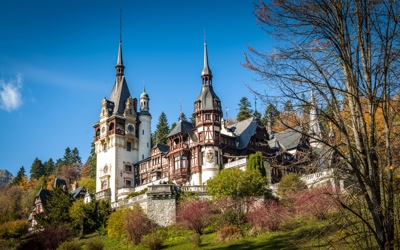
Collections
Castles
48 Activities
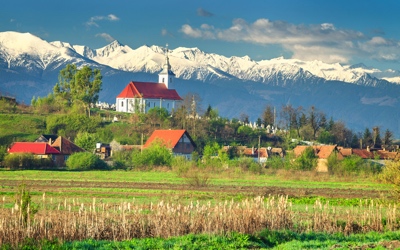
Collections
Transylvania
94 Activities

Collections
Other trips
72 Activities
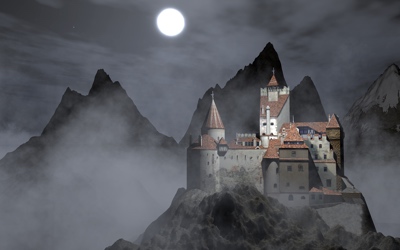
Collections
Dracula Tour
76 Activities
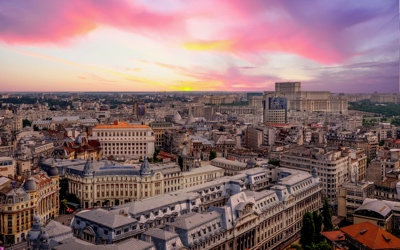
Collections
City tour
94 Activities

Collections
Walking Tour
23 Activities

Collections
Original
26 Activities
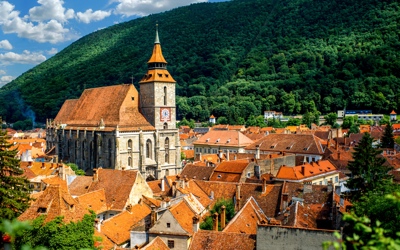
Collections
Medieval Epoch
25 Activities

Collections
Soviet Bucharest
25 Activities
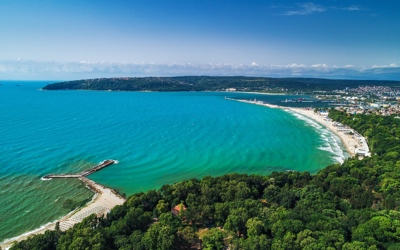
Collections
Bulgaria
23 Activities

